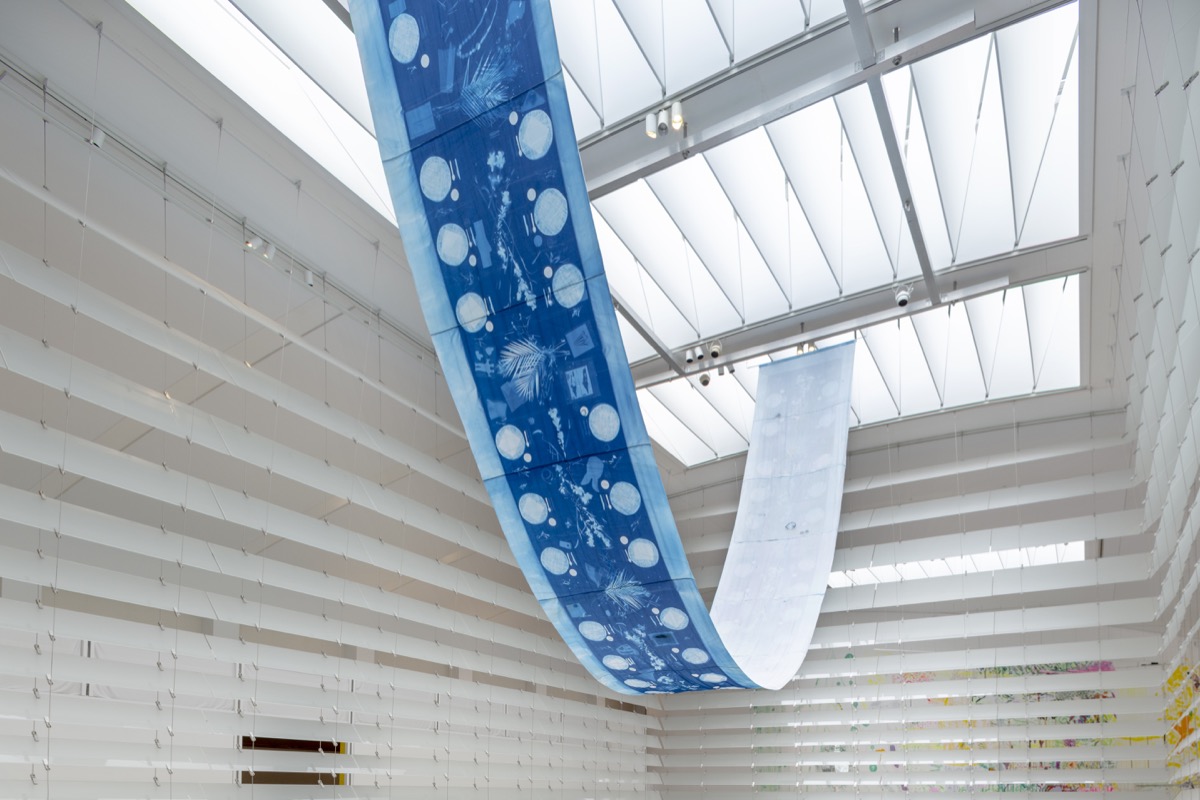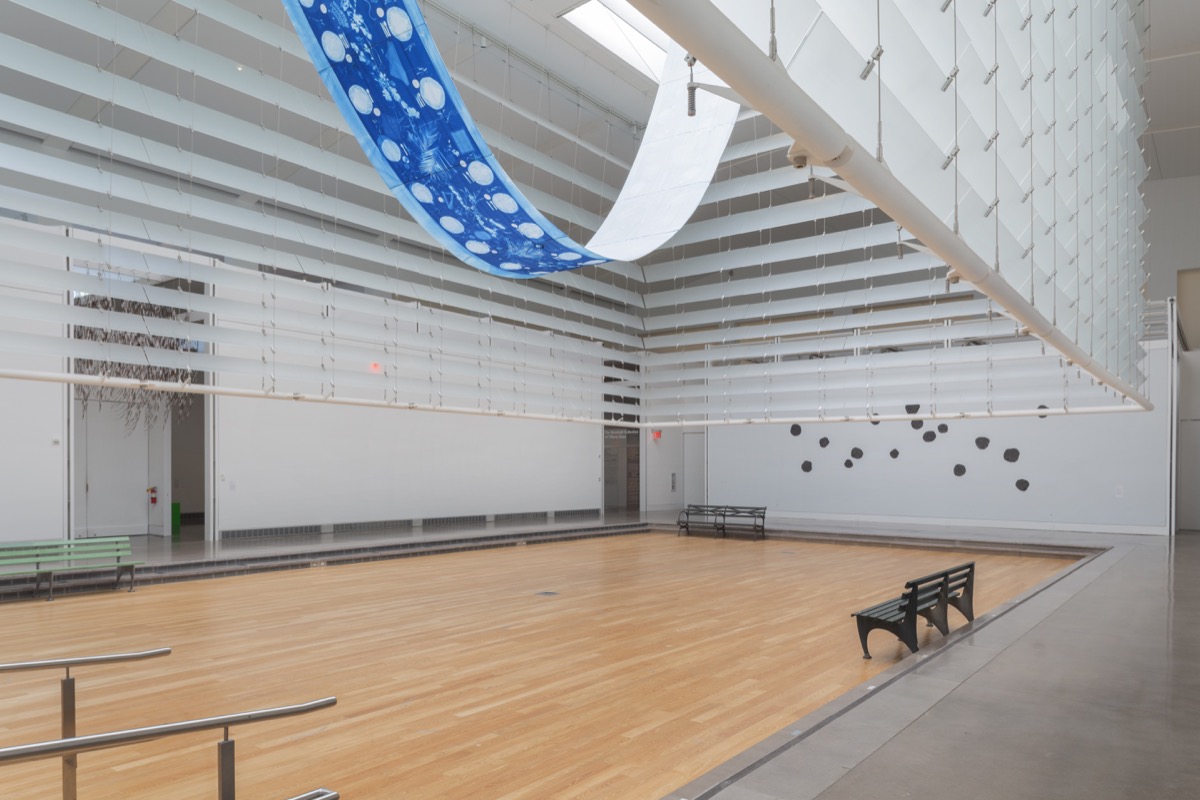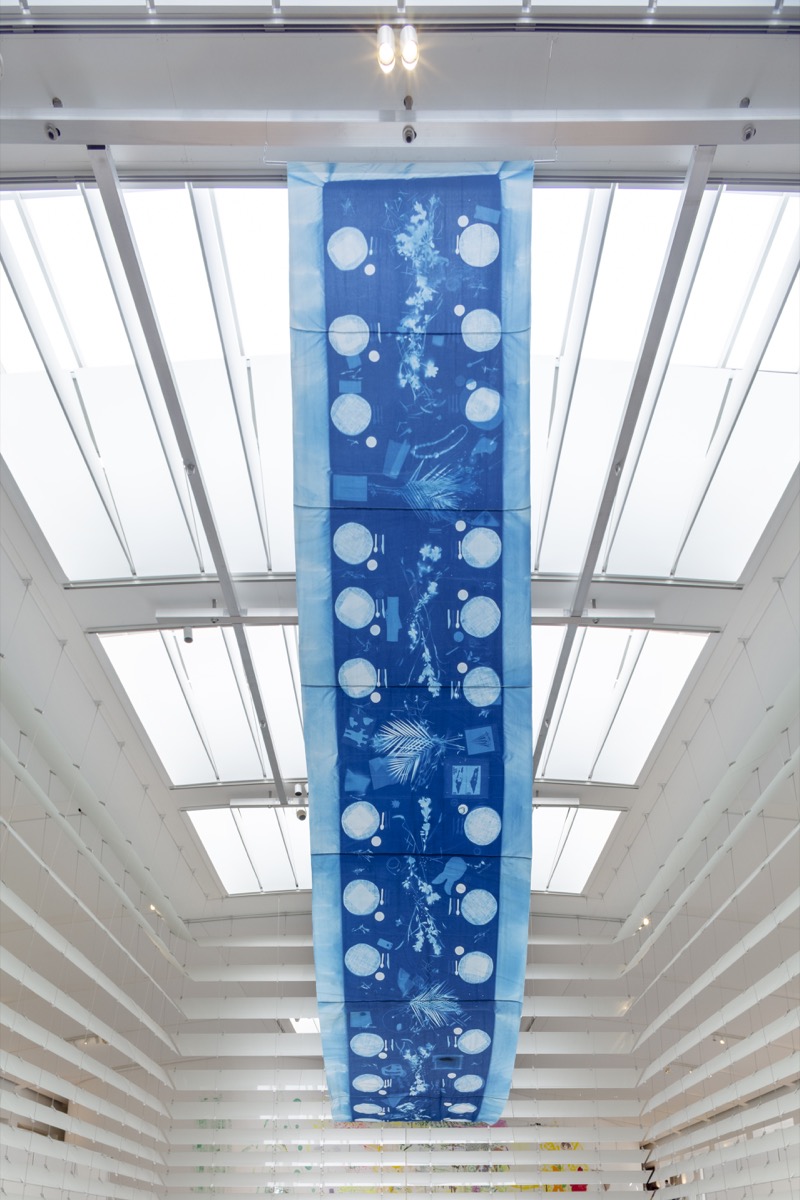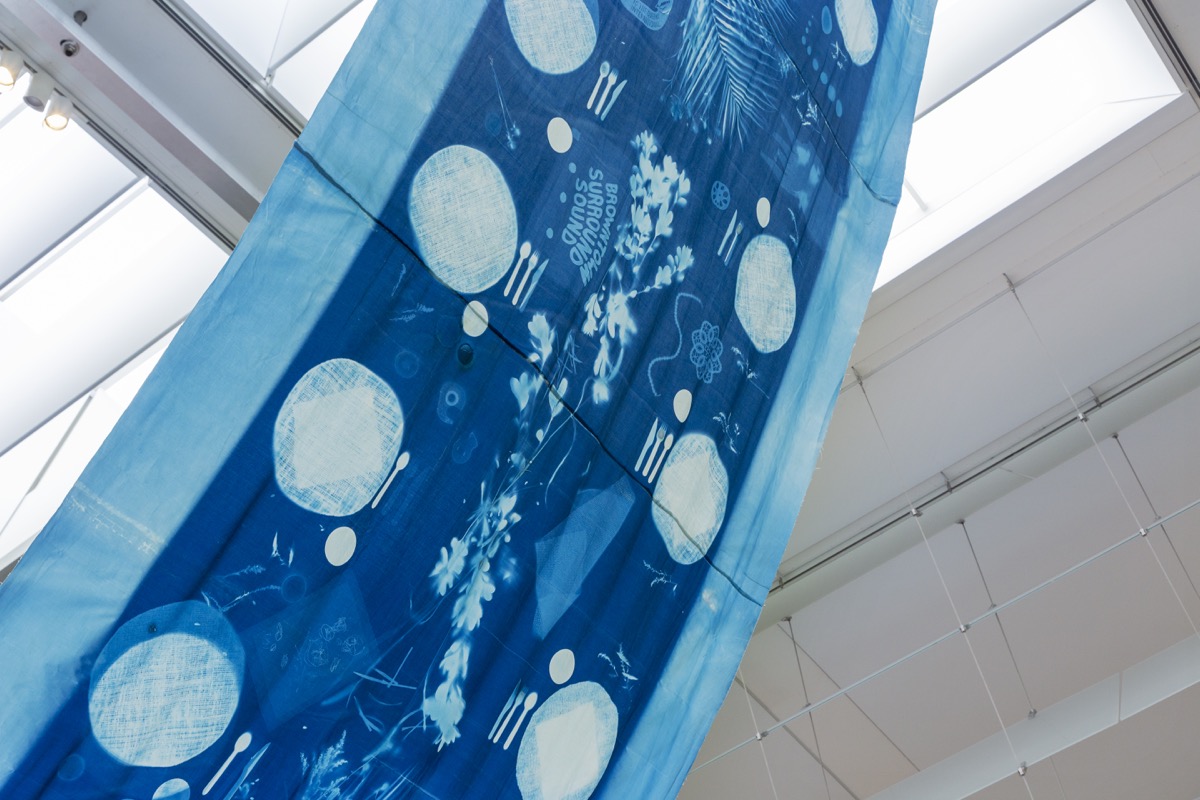| Volumes Cyanotype | 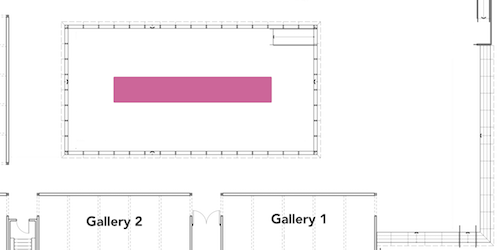 |
|||
| Volumes Cyanotype, a large communal artwork facilitated by QI 2018 artist Essye Klempner and Queens Museum Assistant Curator for Public Programming Lindsey Berfond, will be exhibited in Queens Museum's Skylight Gallery. Artists and organizers of QI 2018 join together for a dinner on August 19th at the museum, prepared by Chef Quentin Glabus (Frog Lake Cree First Nations). Glabus specializes in Canadian cuisine with Aboriginal influences and is a member of i-Collective, a group of Indigenous chefs, seed- and knowledge-keepers, activists, and herbalists. |
||||
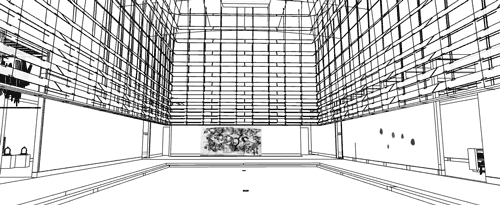 |
||||
| In the cyanotype (or sun-print) process, a photosensitive chemical solution is applied to fabric, paper or another ground. Any objects left on its surface leave their mark, generating a blueprint after exposure to sunlight. In this case, the tablecloth for the meal is treated with the cyanotyping agent. The functional objects of the dinner table, along with additional decorative materials brought by the participating artists, create imprints on the surface of the cloth as the array is exposed to the atrium’s luminescence. The textile develops into a document of the artists' shared dinner and shared efforts—a work of collective authorship. This is an opportunity for QI 2018 artists—who live or work in 15 Queens neighborhoods, are linked to countless global territories, and whose ages span five decades—to meet one another over a meal and establish a single work that bears witness to the concept of the agora, a civic center and place of public assembly. These ideas connect to the building’s historical use as the first site of the United Nations General Assembly (1946-1951), and to the architecture of the museum which is characterized by a sense of openness, like a public square. In communing over Glabus’ cuisine, the Volumes Cyanotype dinner also offers acknowledgement that this collective activity takes place on land first settled by the Lenape people, who were forcefully displaced from the Flushing Meadows Corona Park area by European settlers in the mid-17th century. |
||||
| prev |  |
next | ||
| prev | next | |||
